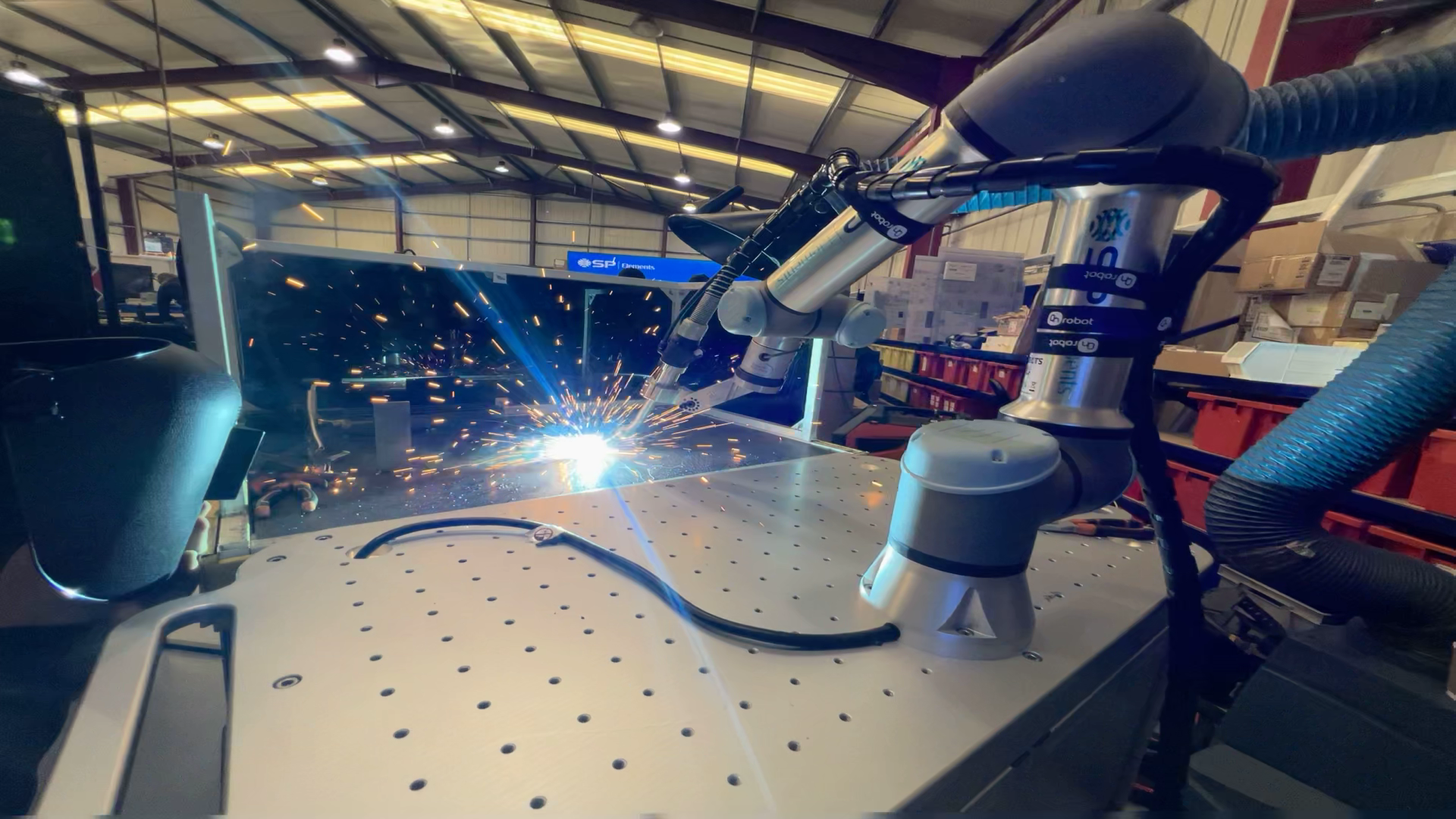
Five Common Pitfalls When Implementing Cobots and How to Avoid Them
Topics:
June 2025
Collaborative robots, or cobots, are increasingly being adopted in UK manufacturing due to their flexibility, ease of deployment and ability to work safely alongside human operators. However, despite the promise of enhanced efficiency and rapid return on investment, many organisations face unexpected setbacks during implementation.
This article outlines five of the most common pitfalls companies encounter when deploying cobots and offers professional guidance on how to avoid them. Drawing on the expertise of SP Elements, a specialist division of SP Automation & Robotics, we aim to help manufacturers approach cobot integration with greater clarity and confidence.
Selecting an Unsuitable Application
One of the most frequent errors is attempting to automate a task that is not well suited to cobot technology. Applications that involve excessive payloads, unpredictable variability, or rapid cycle times may exceed the performance envelope of a collaborative system.
Our recommendation would be to begin with a structured assessment of the application. Cobots are most effective in repetitive, low- to medium-complexity tasks, such as machine tending, packaging, pick-and-place, or quality inspection. SP Elements conducts detailed feasibility studies to ensure each solution is aligned with process demands.
We recommend starting with a structured assessment of your application. The key to successfully implementing collaborative robots (cobots) lies in thoroughly understanding your specific requirements. From there, it’s important to work with experts, such as SP Elements, who can carry out detailed feasibility studies to ensure the solution is tailored to your process needs.
While cobots excel in repetitive, low- to medium-complexity tasks, such as machine tending, packaging, welding, pick-and-place, and quality inspection, they can also be effectively integrated into high-production environments and fully automated systems when approached correctly. Partnering with an experienced specialist can make a significant difference and deliver long-term value.
Underestimating Operator Training Requirements
Cobots are often marketed as intuitive and easy to use. While their interfaces are indeed more user-friendly than traditional industrial robots, successful implementation still relies on adequate training, particularly when peripheral equipment (such as vision systems or conveyors) is involved.
We would suggest investing in structured training programmes tailored to the skill level of your operators and engineers. At SP Elements, training is an integral part of every project, ensuring both initial handover and long-term autonomy for in-house teams.
Cobots are often marketed as intuitive and easy to use. While their interfaces are indeed more user-friendly than traditional industrial robots, successful implementation still relies on adequate training, particularly when peripheral equipment (such as vision systems or conveyors) is involved. Being able to operate and program basic operations on cobots can be very quick. Still, when more in-depth sequencing and programming are required, it is advisable to seek more professional training.
We would suggest investing in structured training programmes tailored to the skill level of your operators and engineers. At SP Elements, training is an integral part of every project, ensuring both initial handover and long-term autonomy for in-house teams.
Incomplete or Delayed Risk Assessment
Although cobots are designed with inherent safety features, they are not exempt from the need for a comprehensive risk assessment. Overlooking this step may lead to compliance issues, reputational risk, or unsafe working conditions.
We would recommend conducting a risk assessment in accordance with relevant UK and international standards (e.g., ISO 10218 and ISO/TS 15066). SP Elements works closely with clients to integrate safe, collaborative solutions that meet all legal and regulatory requirements from day one.
Misjudging the Return on Investment
Expectations around ROI can be overly optimistic. Cobots are not a ‘quick fix’ and must be evaluated with a full understanding of both direct and indirect costs. Integration time, tooling, training, and system support should be accounted for, in addition to labour savings.
We recommend using a detailed ROI framework that includes not only the capital cost but also service life, support costs, and changeover time. SP Elements provides tailored ROI models to support clients in building a realistic and robust business case for automation.
Overlooking the Complexity of Integration
While cobots may seem plug-and-play, real-world integration often involves challenges, particularly when the robot must communicate with upstream or downstream equipment, such as conveyors, sensors, or legacy control systems.
Engage a specialist integration partner with end-to-end capability. SP Elements provides turnkey collaborative robot solutions, including system design, control integration, and commissioning, ensuring that every element of the system functions cohesively.
Strategic Implementation for Long-Term Success
Collaborative robots offer tremendous potential to improve productivity, consistency, and workplace safety. However, the success of any cobot deployment depends on careful planning, realistic expectations and professional integration.
As a dedicated division of SP Automation & Robotics, SP Elements combines technical expertise with a consultative approach, helping UK manufacturers deploy collaborative automation systems that deliver real-world value.
To discuss your cobot project or request a demonstration, contact SP Elements.
Follow us on LinkedIn, Twitter & Facebook to stay updated.
Read more about our automation here…
- Benefits of Automation
- Feeding & Handling Automation
- Automated Medical Device & Assembly Systems
- Medical Device Material
- Part Handling and Part Feeding Vibratory Bowl
- Cost of Industrial Automation
- Advantages & Disadvantages of Robotic Automation
- Medical Device Automation
- Bowl Feeder vs a Vision Guider Feed System
- Special Purpose Machinery
Contact Us
More information
Here you can find the most important news, blogs and videos from SP Automation & Robotics.. We will highlight developments, insightful industry trends, company announcements, technology expos, conferences, and events.



